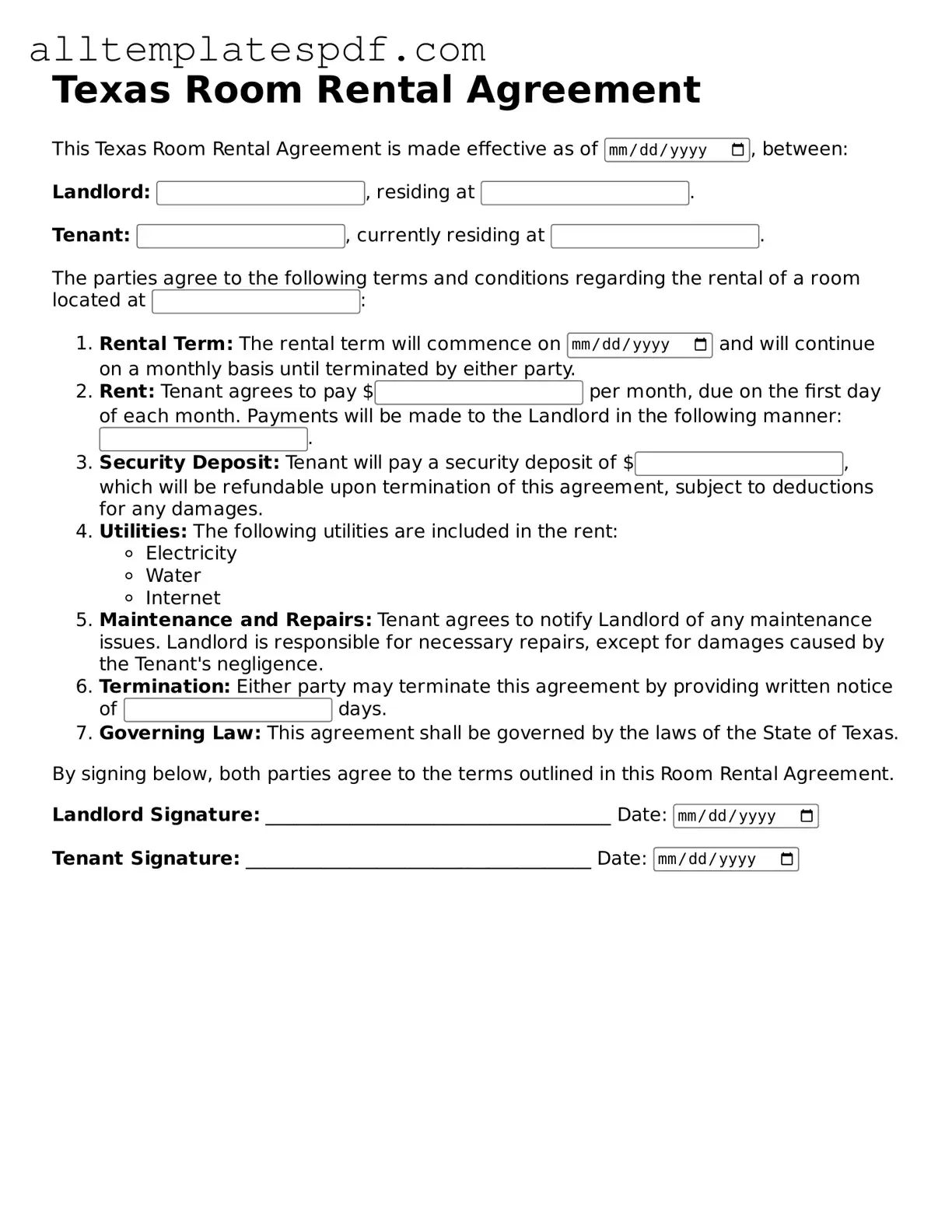Filling out a Room Rental Agreement in Texas can be straightforward, but many people make common mistakes that can lead to misunderstandings or disputes. One frequent error is not providing complete and accurate personal information. It is essential to include full names, addresses, and contact details for all parties involved. Omitting even a small piece of information can create confusion later.
Another mistake often made is failing to specify the rental term. This agreement should clearly outline the duration of the lease, whether it is month-to-month or for a fixed period. Without this detail, both landlords and tenants may have different expectations about how long the rental arrangement will last.
People sometimes overlook the importance of detailing the rental amount and payment schedule. Clearly stating the monthly rent and when it is due helps avoid future disputes. Additionally, including information about late fees or penalties for missed payments can provide clarity for both parties.
Some individuals neglect to outline the security deposit terms. The agreement should specify the amount of the deposit, the conditions for its return, and any deductions that may be taken. This clarity helps protect the interests of both the landlord and the tenant.
Another common oversight is failing to address utilities and maintenance responsibilities. The agreement should clearly state which utilities are included in the rent and who is responsible for maintenance and repairs. This detail can prevent disagreements about who should handle issues that arise during the rental period.
Not including pet policies can also lead to complications. If pets are allowed, the agreement should specify any associated fees or restrictions. Conversely, if pets are not allowed, this should be clearly stated to avoid misunderstandings.
Some people forget to include provisions for breaking the lease early. It is important to outline the terms and conditions under which either party can terminate the agreement before the end of the rental term. This can save both parties from unexpected legal issues down the line.
Another mistake is failing to ensure that all parties sign the agreement. An unsigned agreement may not hold up in court if a dispute arises. It is crucial for all parties to review the document and provide their signatures to confirm their understanding and acceptance of the terms.
People may also ignore the need for clarity in the rules regarding guests. The agreement should specify how long guests can stay without prior approval. This helps maintain a good relationship between landlords and tenants and ensures that everyone is on the same page regarding occupancy limits.
Finally, many individuals do not keep a copy of the signed agreement. After filling out the form, it is important for both parties to retain a copy for their records. Having a written record can be invaluable if disputes arise in the future.
